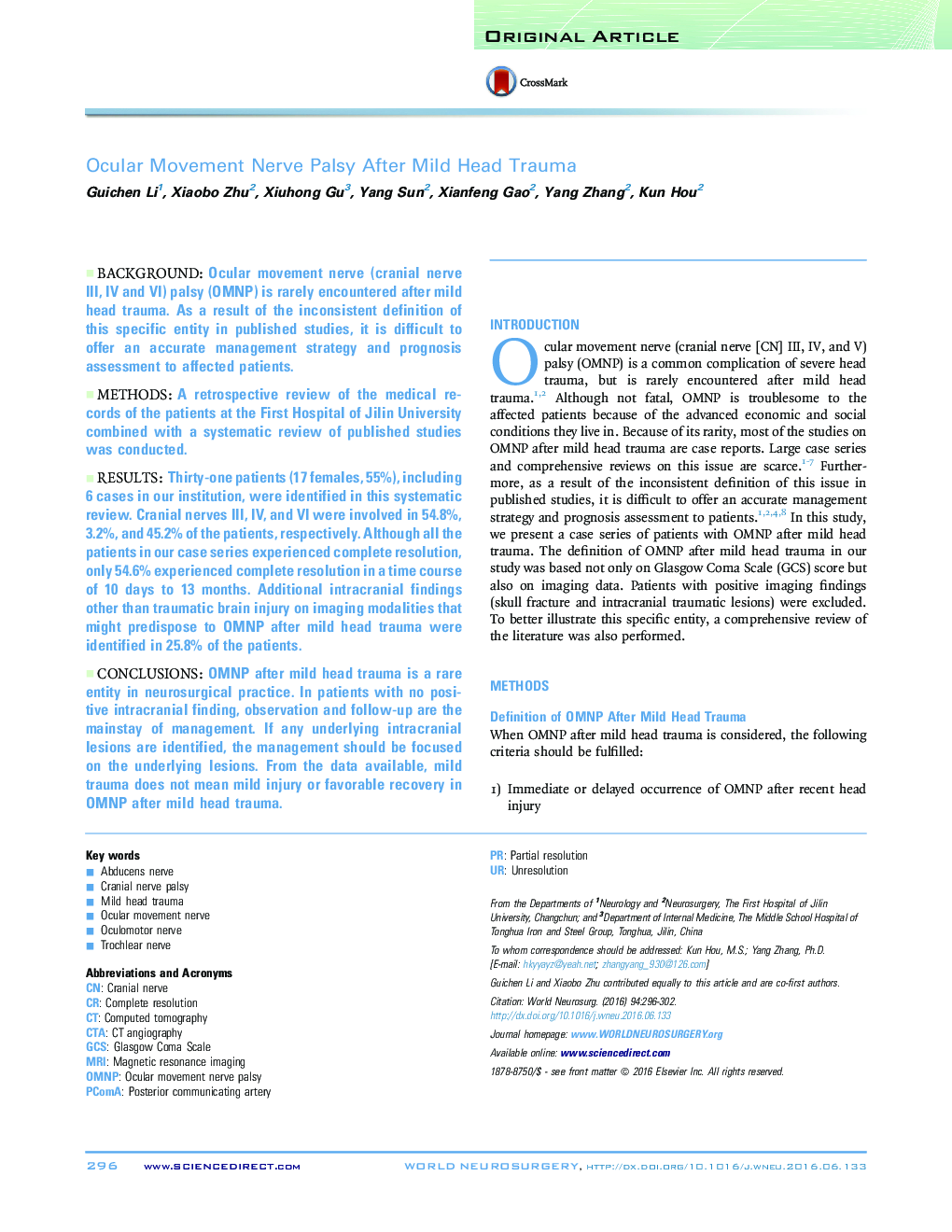| Article ID | Journal | Published Year | Pages | File Type |
|---|---|---|---|---|
| 3094613 | World Neurosurgery | 2016 | 7 Pages |
BackgroundOcular movement nerve (cranial nerve III, IV and VI) palsy (OMNP) is rarely encountered after mild head trauma. As a result of the inconsistent definition of this specific entity in published studies, it is difficult to offer an accurate management strategy and prognosis assessment to affected patients.MethodsA retrospective review of the medical records of the patients at the First Hospital of Jilin University combined with a systematic review of published studies was conducted.ResultsThirty-one patients (17 females, 55%), including 6 cases in our institution, were identified in this systematic review. Cranial nerves III, IV, and VI were involved in 54.8%, 3.2%, and 45.2% of the patients, respectively. Although all the patients in our case series experienced complete resolution, only 54.6% experienced complete resolution in a time course of 10 days to 13 months. Additional intracranial findings other than traumatic brain injury on imaging modalities that might predispose to OMNP after mild head trauma were identified in 25.8% of the patients.ConclusionsOMNP after mild head trauma is a rare entity in neurosurgical practice. In patients with no positive intracranial finding, observation and follow-up are the mainstay of management. If any underlying intracranial lesions are identified, the management should be focused on the underlying lesions. From the data available, mild trauma does not mean mild injury or favorable recovery in OMNP after mild head trauma.
